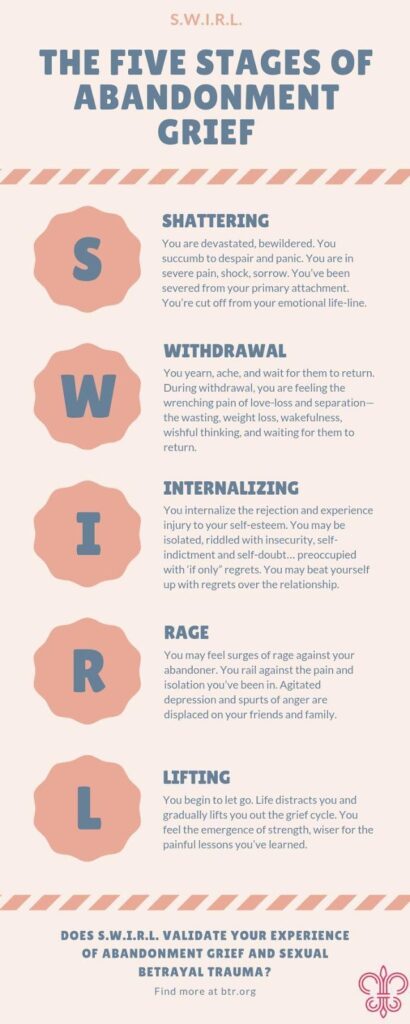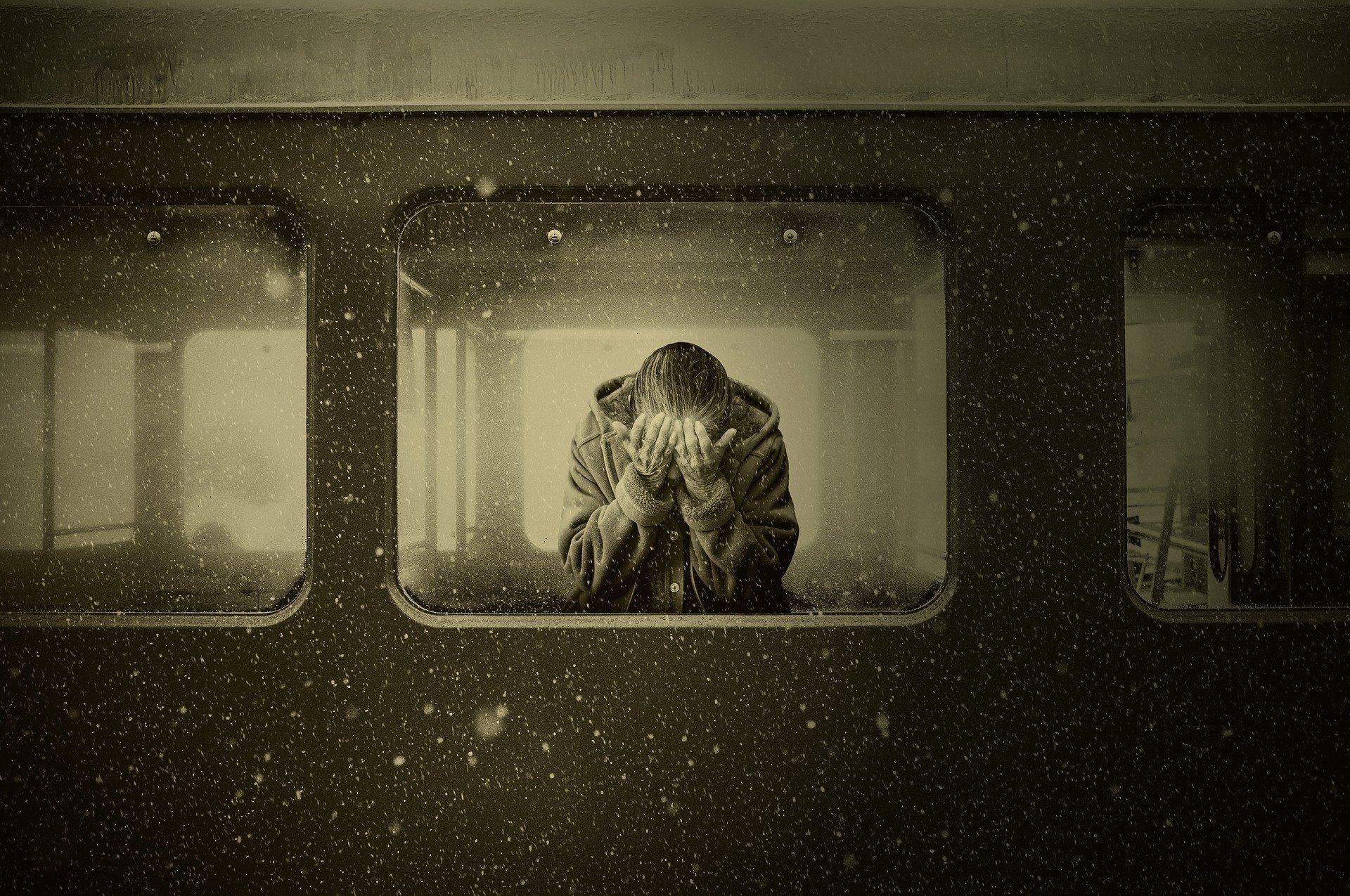WHAT IS ABANDONMENT?
For the purpose of this article, I will be exploring the phenomenon of abandonment in the context of a rupture in an attachment relationship or withdrawal by the significant other at the psychological (emotional, sexual, physical) and spiritual levels. This experience will be described in terms of an experience of being feeling rejected, dismissed, devalued, left in a state of emptiness and dread, cut off from a crucial source of sustenance.
I will be looking at the experience of abandonment through the lense of Psychosynthesis transpersonal psychology and the redemption of the traumatic journey, Neuroscience and the neurobiology of attachment and separation anxiety, CBT – the cognitive behavioural implications,
EXPERIENCE OF ABANDONMENT
When the child is raised in an environment where there are significant neglect and gap in their system of protection -physical, sexual, psychological or spiritual they experience abandonment. They internalise a deep-seated fear and a message that they are not important or valued leading to toxic shame. This is the wound from which they need to heal.
Children are totally dependent on their caretakers in terms of provision and safety. When this is compromised the child develops self-belief of insignificance and a mindset about the world that is similarly untrustworthy. Being inconsistently or unpredictably emotionally or physically present e.g. addiction to emotional distress. Healthy relationships are a buffer against stress so even if they had all these negative experiences
For the young person to develop emotionally they need to grow in a sense of themselves as another i.e. person in their own right becoming familiar with and including every part of their emotional life experience. To become a whole rounded person this to be validated and integrated for them to thrive in their life journey. Emotional abandonment occurs when this young person feels they need to hide a part of themselves in order to feel safe and accepted and to avoid rejection by a significant other whom they are dependent on for support. They internalize the message that is not safe to show vulnerability. Also, that it is not ok to make mistakes or rejoice/be visible in successes.
When the parent or caregiver has not adequately negotiated their own emotional development, they can project expectations on the child which are unrealistic and not age-appropriate. Where the caregiver sees the child as an extension of themselves resulting in a blurring of boundaries and dismissal of the young person’s growing autonomy and self-determination.
For example, putting the responsibility on the child that belongs to the adult or projecting their own feelings of inadequacy onto the child and blame them as the root cause of their anger or frustration. Correction can take the form of blanket disapproval of the person, not just the behaviour where the window for growth presents for the forming child. This can embed at the core of their being.
Where the children are treated as peers and there is a lack of parent/child distinction to help them internalise a parenting object or inner parenting to help them self-regulate and self-manage in later life.
In this psychological vacuum, the child can experience abandonment at every level of their personhood including their sexual and spiritual identity – physical, emotional, sexual, spiritual.
SPIRITUAL ABANDONMENT
When I look I am seen, so I exist … (Winnicott, Playing and Reality, 1971)
When I talk about spiritual abandonment, I mean when we are disconnected from our core power and strength as human beings that gives us a deep sense of who we are, why we are here, the ‘for what’ of our lives and our will to be here living this life. Further to this, an inner knowledge, deep-seated in the heart of each one of us. That we are responsible for this life and as a corollary to this we have the right to live it to the full and shine the light of the gift that our lives are.
In their book, The Psychology of Love, Firman and Gila describes what it means to be disconnected from this sense of connection and belonging and our self-sovereignty and calls this experience the primal wound. The primal wound that occurs when we are treated not as individual, unique human beings but as objects, thereby annihilating our authentic sense of personal self or “I”. Such treatment by significant others disrupts our experience of the primal connection between “I” and deeper Self— thus, “the primal wound”—and thereby disrupts the relationships to our personhood, to other people, and to the natural world resulting in a felt experience of non-being.
This cycle of missing a person can be intergenerational. Those who influence us in our formative years may have been wounded themselves through unmet needs or lack of empathic connection. They cannot fully mirror our authentic being.
Firman and Gila describe how the caregiver’s wounds constitute blind spots in the mirroring function which cannot but create areas of non-being in the child—“When I look I am not seen so I do not exist.” Instead, they create not the experience of being, but the experience of non-being.
Kohut saw the empathic connection as so essential to human selfhood that it is a “psychological oxygen (Self Psychology) without which we cannot psychologically survive”. This other providing the self-object function allows the continuing experience of unique selfhood of individual being. – the ‘cohesion of self in space and time,” akin to Winnicott’s notion of “continuity of being”
When I speak of spirit, I am referring in this context to the most intimate part of us. That which we experience ourselves mirrored back in the eyes of our beloveds. In the arms of our lover at the most intimate point of lovemaking, where we mirror each other. We all have a sense of what that part is though distorted perhaps and split off. Some of us have traditions be it religious or other that help us describe its beauty in terms like the authentic self, the soul or spirit within. We see this part shine through the tears of the child and hear it in the cry of the newborn. We have heightened moments in our lives where we get a glimpse of ourselves as more than, part of the expansive universe. An aha moment or wow exhalation that leaves us speechless. Here we feel connected and nothing can disturb the ground of our belonging at that moment.
Neuroscientific research tells us the huge benefits of mindfulness at this level. How a mindfulness or meditative practice that centres us in the self-awareness as deeply rooted on the earth and connected to a core power of love and goodwill (the Divine, the Ground of Being, and Ultimate Reality) is transformative even at the level of the genome.
SEPARATION STRESS / ANXIETY
Separation stress or anxiety has a biological impact which activates the physical pain centres of the brain and can leave an emotional imprint in the brain’s warning system. In the biological journey of the child, their primary experience of abandonment occurs in the response to separation from mother or primary caregiver. This sensation is stored in the amygdala which is a structure set deep into the emotional memory system and is responsible for conditioning the fight/flight/freeze response to fear. Primal fear may have been initiated by birth trauma and even have some prenatal antecedents.
Later events of separation particularly in extended relationships, can trigger the primal fear response especially if they are abrupt in nature and can precipitate a symbiotic regression where infantile needs resurface and the individual feels unable to survive without the lost object or attachment figure. Feelings of terror and outright panic can be precipitated.
FEAR OF ABANDONMENT AS A NATURAL SURVIVAL RESPONSE
It is important to state from the outset that the experience of fear of abandonment is a natural survival response to our deep-seated need for attachment and belonging. Abandonment in the same way as an attachment is experienced at the neurophysiological level i.e. the brain and nervous system.
To understand the fear of abandonment and its impact on our body and nervous system we must look at the process of social engagement. Stephen Porges neuroscientist and the author of the polyvagal theory asserts that social engagement is the process in which we use vocalization, listening to intonation in the voice, and facial engagement. He describes how just as the baby is soothed by ingestive behaviours as they are being nursed, adults go out to lunch or go out for a drink, as a way of socializing, modulating physical distance and coming close. Ingestive behaviours use the same neural mechanisms that we use for social behaviour.
When we feel safe in a relationship, we stay within our window of tolerance and our cortex (rational brain, clear judgment, planning and decision making) stays functional. When we perceive threat or danger, the sympathetic nervous system is activated and in turn, arouses the amygdala (processes fear and threat) to prepare for fight or flight. We can experience this hyperarousal as an emotional hijacking; our faculty for reasoning and clarity becomes flooded. In counterbalance to this response of escalation, we have the process of de-escalation which activates when we perceive a life threat. This is called the parasympathetic nervous system (PNS) which is sometimes referred to as the ‘rest and digest’ modality calms everything to the point of shut down. We go numb and freeze.
Neuroscientific research confirms that our earliest relationships build the brain structures we use for relating. These bonding relationships encode templates, schemas, in the neural circuitry of our brains by 12-18 months that determine our attachment styles and filter new relational experiences. The opportunity for an open-ended and flexible engagement in subsequent relationships can be foreclosed by recursive patterns of defence and stuckness that become embedded.
Empathic connection and bonding regulate fear, anxiety and shame, and soothe the firing of the amygdala. The hypothalamus located deeper in the limbic system releases oxytocin – the bonding hormone that is released through touch, warmth and movement calms the amygdala and calms the fear response.
Caregivers activate the growth of the limbic regions of the brain – the seat of our emotional learning that is foundational to our subjective sense of personal and social self– through emotional availability and reciprocal interactions. This includes the hormones of bonding and pleasure that are released in intimate and contingent relating. That is nurture.
This attunement and feedback from the significant other to the baby helps regulate the baby’s emotions. In this interaction where the baby is being mirrored by parent or significant other, the baby’s pre-frontal cortex is developing. The child through being mirrored by the caregiver essentially download a system of making sense of their own emotional experience. They grow in self-awareness and self-reflection.
The baby is introjecting the reflections of who they are from the parent /caregiver to develop the internal working models of who they are in relation to the other. As the baby’s PFC develops from these experiences, they can begin to regulate their emotion on their own. They can begin to have self-awareness and self-reflection.
A person’s early attachment style shapes their interrelating and partner selection which tends to fit the pattern of early relationship dynamics where the emotional climate gets recreated.
For example, if they felt ignored as children, they may unconsciously choose a partner who is self-centred or distant. People who are afraid of being abandoned often not only select partners who are less available, but they may also distort their partners, believing them to be more rejecting.
FEAR OF ABANDONMENT AND ATTACHMENT STYLES
We all need a connection when infants are born, they are typically put on their mother’s chest. This procedure releases the bonding chemical oxytocin which enables the baby to be soothed. Likewise, when we embrace each other family, friend, lover this chemical is released in our bodies.
As we looked at earlier in this course, the experience of abandonment and severe traumas around that in early childhood and formative years may be a very real part of their psychological makeup that influences how they live their lives and relationships in the present. For example, the death of a loved one, neglect, or emotional and physical abuse.
However, they can also occur at a less intense way in the normal day to day events of growing up and family life. There are basic psychological needs for the child, food, shelter, safety, empowerment that can be compromised given the circumstances of the family unit. For example, the loss of income may restrict provisions in all these areas or the sudden death of a parent. Winnicott famous affirmative that, ‘good enough parenting is good enough’ is a fit here. The main variable is whether the parent or primary caregiver had consistency in their holding of the child. By this, I mean that they had empathic regard and congruence that included saying, ‘I am sorry I was tired’ and be seen to make the necessary adjustment to allow the child to be restored to a sense of wellbeing and trust.
Understanding how their parents/caregivers related to them and whether they experienced a secure attachment versus an insecure one, can give people clues into how they view relationships in the present.
A person’s early attachment history acts as an internal working model for how he or she expects relationships to work. As a result, people may carry their childhood insecurities and expectations for how others will behave into their adult relationships.
Our attachment pattern or style evokes a response from the people around us. When we have a broken sense of self and our needs it is difficult for us to communicate this to the other and maintain a sense of secure healthy attachment.
What you can see in developmental trauma and unhealthy attachment is the person evoking unhelpful responses from significant others. This in turn reinforces their belief system around the trustworthiness of others and the stress and need for vigilance.
This can perpetuate a cycle of behaviour that is aggressive and punitive in an attempt to get one’s needs met in the relationship. Or on the other hand, can result in an avoidance of expressing feelings of hurt and anger toward a partner for fear of potential loss or rejection. In both scenarios, there is an unmitigated rupture that can only be addressed through self-awareness on the part of both parties around their respective attachment styles.
Attachment Styles (Bowlby’s Attachment Theory and Neuroscience)
-
Secure attachment
Here the person learns to have a realistic expectation of people. Secure attachment falls at the midpoint of the spectrum between overly organized strategies for controlling and minimizing emotions at one end and the uncontrolled, disorganized, and ineffectively managed emotions at the other.
There is a flexible balance of stimulation – vitality – and regulation – calm or ease.
- Avoidant attachment – in about 20% of the population (Dan Siegal, 2019)– is, “I haven’t gotten what I need early in life from my primary caregiver, so the way I’m going to survive is, I’m not going to need anything from anybody.” This attachment style is characterized by a self-fulfilling prophecy that the other is not dependable and they need to remain self-sufficient to survive. This attitude of distance I can in turn evoke a non-empathic response from their loved one which confirms the core belief.
The coping mechanisms of avoidance and withdrawal manifest as an over-regulation of the body and emotional signals and flight from feelings and people. There is a shutting down of core affect where the person can present as under-stimulated and over-regulated.
- Ambivalence attachment This is where the child experiences the parent or caregiver as inconsistent in their attention and affection. When children are not certain what type of reaction they will get from their parent or caregiver, they will detach or stop forming emotional attachments. A person with an ambivalent attachment style is constantly looking for proof of love and affection. They are distrustful of others and seek to verify the relationship, often with possessive and controlling behaviours that can backfire and alienate the other person. They experience toxic shaming as a result and adopt maladaptive behaviours of self-abuse
-
Disorganized / Anxious attachment
Here the child may have seen their parents react by being frightened or frightening in moments of stress with them. If we have a disorganized attachment, we can’t regulate our emotions, we focus solely on survival and fear.
The sympathetic nervous system is over-stimulated and under-regulated. The person can feel flooded with stress, fear of abandonment, panic.
They don’t have the flexibility to be curious and to explore conflict issues and engage primarily in that moment through anger aggression by way of feeling seen and heard.
On the other hand, there can be such a sense of danger or life threat that bypasses the flight-fight response and causes collapse. The parasympathetic nervous system over-regulates bodily energy to the point of paralysis and helplessness.
Also, neuroscientific research reassures us that this is not the end of the story. Essentially it explores the neural plasticity of the brain where new neural pathways and networks are set down that allow us to relate, moment by moment in new, healthier, more resilient ways. In the next module we will look at practical steps to take in terms of modulating our response patterns in relationships.
FEAR OF ABANDONMENT: SCHEMAS AND CORE BELIEFS
In this section, I will explore the relationship between fear of abandonment and the person’s schemas and core beliefs that have been embedded in early childhood.
A schema is a cognitive framework or concept that helps organize and interpret information. It is a short cut to help us predict what is going to happen. How are other people going to react when they are needy and need positive reinforcement. Are they going to be supported or dismissed? Early childhood cognition is generally very dichotomous – black and white thinking which exclude nuances and grey areas. E.g. These schemas if unchecked can lead to extreme belief patterns
For example, if the child asks the parent if they can play and they get a negative response they can go to a catastrophic fantasy where the world becomes a hostile unsafe place. On the other hand, if they fall down and they are held and comforted, straight away they will learn the world is a friendly safe place.
There tends to be all or nothing language in these schemas. For some of us, criticism can trigger extreme reactions of abandonment
Core Abandonment Beliefs
ABANDONMENT: All people leave
MISTRUST: People will hurt, reject, take advantage of me or just not be there when I need them
EMOTIONAL DEPRIVATION: I don’t get the love I need. Nobody understands, cares or even tries to meet my needs
DEFECTIVENESS: If people knew me, they would reject me
FAILURE: I don’t measure up I am not able to succeed
Let us pause for a moment,
Ask yourself – what are your core beliefs and schemas in your attachment relationships. Are any of those listed above among them?
It is easier to focus on one close relationship where you are feeling challenged at the moment or have been recently, and how you negotiated that challenge in terms of your thinking and behaving.
How do we begin to Moderate some of those extreme belief systems?
One way could be to check out what your partner or boss is actually thinking and how they are experiencing you?
If both parties are experiencing a fear of abandonment and are activated at the level of survival response, it is very difficult if not impossible to hear what the other is actually saying, both on a physiological and cognitive level.
Sometimes it may come to a panic-driven urgency to be the first one to leave the relationship to avoid feeling the abandonment – so one switches off, dis-engages foes into flight mode and starts the process in their head of a new relationship.
How do you respond in the following scenarios?
Your partner / close friend does not reply to your text message for a day?
Presume they are busy and haven’t had time to look at their texts? Presume they are fed up or angry with you? Presume they are engaged with someone else and not so interested in you anymore? Presume they are sending you a subtle message? Or other?
You are feeling down and your partner comes into the room buoyant and energetic and talks about their day?
Do you adapt to their mood? Go silent and withdraw? Explain to them that you are glad they are happy, but you are just not feeling the best today? The rage inside that they cannot see you how you are feeling? Get panicked because they do not seem to be able to read your mind? A mixture of these? Or other?
Many people grow up with fears around abandonment and worry they will be rejected by peers, partners, schools, companies, or entire social circles. This fear can become very heightened when they are progressing a long-term romantic relationship and looking to settle down.
Facing this fear builds resilience and inner security over time. Facing this fear builds self-knowledge – understanding where the fear comes from and how it is still controlling us and its impact on how I relate to others and indeed myself.
The First step in redressing your attachment style or ways of managing conflict in your close relationship is to ask yourself:
- What is your attachment style response?
- What is at the root of this response? / What caused these fears as a child?
- How did that response serve you in the past but is not helpful in the present?
- What are the current triggers in your relationships that causes this response?
WORKING WITH THE FEAR OF ABANDONMENT AND SEPARATION ANXIETY
In this section, I will explore pathways towards redressing these schemas core beliefs and practical strategies for their transformation.
Fortunately, a person’s style of attachment is not fixed. If a person is able to form a relationship with someone who has a long history of being securely attached, that person can learn a new model of relationship. Also working through these issues in therapy where one experiences themselves as been seen and heard and free to express who one actually is can be transformational. This experience of a secure relationship with a therapist can help a person form learned secure attachment.
Every one of us has fears about being left alone and at particular moments in or lives where we are experiencing vulnerability these fears become heightened. This sets up a cycle of anxiety where our inner critic gets activated and we struggle to make sense of these feelings of abandonment by turning in on ourselves to find the cause. The inner critical voice can repeat the mantras that are very disabling and debilitating e.g. i.e. we are unlovable or worthless. Learning how to mitigate this cycle is key. The point of intervention is where the wound of self-abandonment is festering. To apply an ointment of love and kindness to ourselves can be an advanced procedure outside our skillset. To become willing to start the process of training and upskilling is the first crucial step and the hardest.
The reality neither you nor I were meant to be an island self-contained self-sufficient and independent of others.
How do I stop abandoning myself? – Some Strategies
In the moment empathic connection – identifying with your physical and emotional responses and their impact on your social engagement nervous system down through the centre of the body (vagus nerve). Simply place one hand on the chest area and the other on the solar plexus signalling to the cognitive mind that ‘all is well’. Allow your breath to deepen as it will do naturally when you bring your attention to your body with an attitude of love and kindness and respect. Typically we drive our bodies like workhorses with little windows of opportunity to even draw breath. Time to change that system?!
Three acts of kindness to oneself per day:
Beginning with the cup of beverage made with an act of love and kindness. This is a mindfulness exercise – a discipline of the heart just as you would for a friend who you are reaching out to in support.
Self-care and work-life balance. Taking up a hobby or activity you have always wanted to do but perhaps were waiting for permission from others at some level. This can stimulate your imagination and creativity and build an inner resource of wellbeing, self-efficacy and self-worth.
Listen with the ear of your heart!: Developing a practice where you fine-tune your ear to listen for the promptings of your inner wise person. Just as we internalize the voice of negative mentoring, we can also have the voice of a constructive critic. This is the inner wise person we recognise when we are reaching out to others in distress.
Our social network: Building up contact with trustworthy friends and family members that can hold the ground of secure attachment and help regulate anxious cycles, build realistic expectations, develop a platform for mutual support and encouragement. Where you feel seen heard and free to be yourself. Solid friendships that last for years very often are at a distance of space and time intervals between meetings but nonetheless where the person knows you and a presence of continuity that has witnessed you’re the nuances of your unique journey
Self-empathy and compassion: Throughout our lives, we encounter wises figures who were a point of regulation for us. Just as we internalise the constrictive belief systems and expectations of our conditioning and formation ground, we also download the unconditional and life-giving mirroring of those who were loving, accepting, who made us feel seen and heard and a person in our right. A grandparent, aunt, uncle, older sibling, parent, friend, the teacher even an animal can be an external unifying object. Someone who in spite of our shortcomings reflected back to us our core self, soul, spirit, uniqueness.
Wise person meditation exercise:
Imagine this wise person and yourself going to a place where you feel comfortable and at home in your own skin. Perhaps you could invite them into your living space for a meal. In your mind’s eye, greet them, see what they are wearing, their facial expression, gestures. Share with them what is happening for you at the moment in your life and ask them for their advice. Tell them how you feel, what dominates your thought patterns and what you would like to happen in this situation. Then – Listen!
THE ROAD TO RECOVERY AND HEALING
In her book Journey from Abandonment to Healing, Susan Anderson charts five stages that accompany the loss of love.

S.W.I.R.L. is an acronym which stands for the five stages of abandonment: Shattering, Withdrawal, Internalizing, Rage, and Lifting.
1: SHATTERING – This is where one feels banished from an emotional and even spiritual life-line where there had been fusion. Kubler Ross talks about Denial at the primary stage of separation and loss. That feeling that you are entering into surreal territory and it just cannot be real what is happening to you. A shock phase. Your relationship is breaking apart. Anderson describes it as one’s hopes and dreams being shattered. There is bewilderment a panic or despair can set in. You are devastated, bewildered.
2: WITHDRAWAL – Anderson describes this phase in terms of a Love-withdrawal akin to Heroin withdrawal as each involves the body’s opiate system and the same physical symptoms of intense craving. One craves a love-fix to put them out of the withdrawal symptoms.
3: INTERNALIZING – This phase is marked by intense rumination where the rejection is internalised and the cause attributed to oneself. The ‘abandoner’ is idealised at the expense of one’s own sense of self-worth which is replaced by self- Indictment and self-doubt. There is as a preoccupation with ‘If only regrets’ – If only you had been more attentive, more sensitive, less demanding, etc
4: RAGE – This stage is identified as the turning point in this grief process where there is separating out of form the toxic symbiosis. There is a reallocation of the blame around the failed relationship. This phase is marked by surges of rage about the pain and isolation amidst revenge and retaliation fantasies. During this turbulence, anger can get displaced on your friends and family.
5: LIFTING – With this expression and redirection of the anger a space is created within for the emergence of energy a new cycle of life. You begin to Let go. Life distracts you and gradually Lifts you There is a resurrection out of the grief cycle and the love flow state re-emerges.
Anderson issues a word of caution: That there needs to be an integration of the feelings experienced in each of these stages not a bypassing or living behind. They are part of who we are they give our life nuance and enable us to have flexibility in our relationships where we can empathise with others and learn to trust to explore the invitation to love and thrive with an other human being.
Furthermore the S.W.I.R.L. is a movement through the stages that ‘happens over and over within an hour, a day, a month, sometimes a period of years – cycles within cycles – until we emerge out the end of the funnel-shaped cloud, a changed person, better able to find love than before.’
Bibliography
https://www.psychalive.org/fear-of-abandonment/
Susan Anderson, Journey from Abandonment to Healing, Penguin Putnam Inc, Berkley, USA, 2014
John Bowlby, Attachment. Attachment and Loss (vol. 1) (2nd ed.) Basic Books, NY, 1969
Firman & A. Gila, The Primal Wound: A transpersonal view of trauma, addiction, and growth. SUNY Press, 1997
Heinz Kohut, The Analysis of the Self, International Universities, New York, 1971
Dan Siegal, The Developing Mind: How Relationships and the Brain Interact to Shape Who We Are, Guilford Press, NY, 2020




